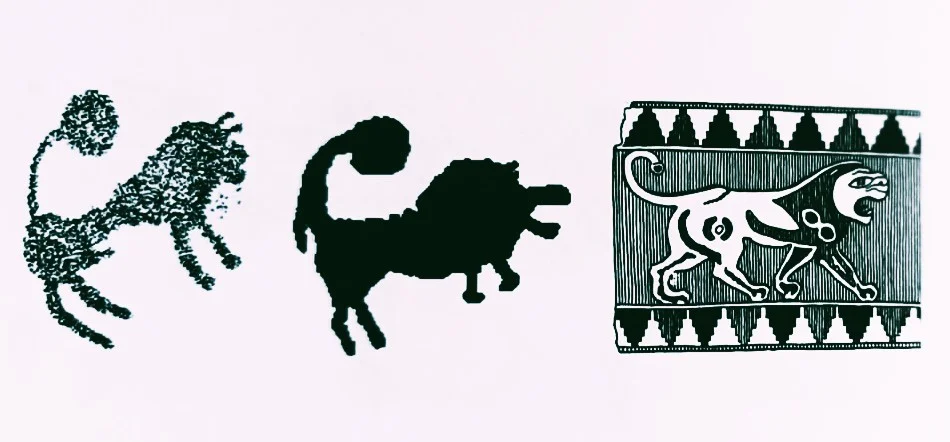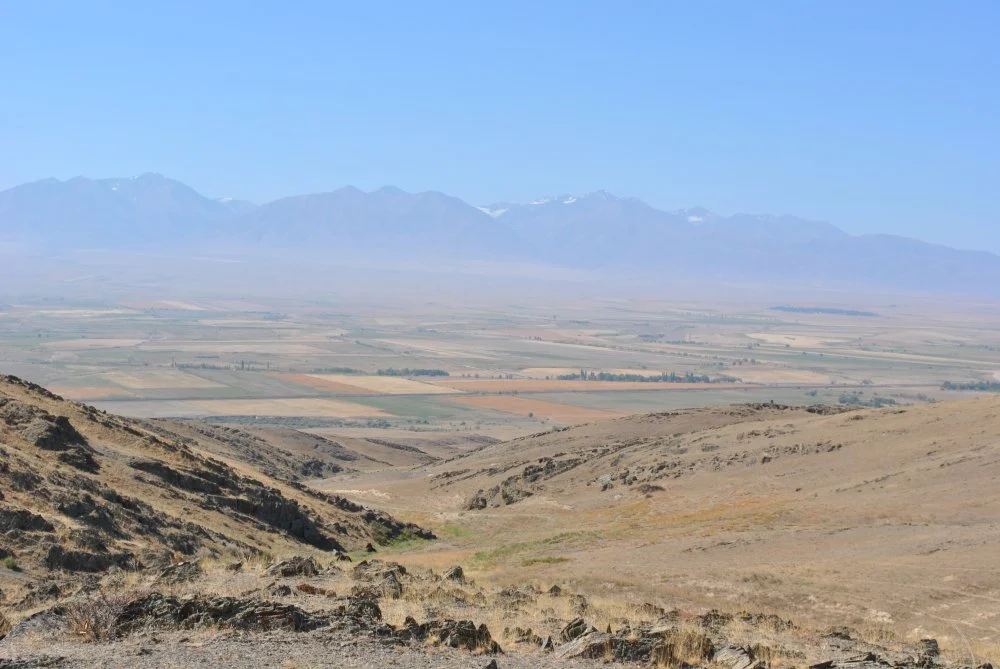Have you ever wondered why there are petroglyphs of lions among other rock carvings in Kazakhstan? Could they have really lived in this region in ancient times?
Historically, lions were not confined to Africa, roaming across parts of Eurasia from southeastern Europe to northern India. Today, however, the nearly extinct Eurasian lion survives only in the Gir Forest National Park in Gujarat, a state in western India.

Comparison table. From left to right 1. Lion, Gabaevka. 2. Lion, Zhyngylshyk. 3. Lion, carpet from Pazyryk. /Olga Gumirova
Despite a lack of reliable written records or archeological evidence suggesting lions coexisted with humans in what is now southern Kazakhstan, two petroglyphs discovered in the region depict predators that scholars identify as lions.

Gabayevka. The Silk Road have passed here/Olga Gumirova
One of these petroglyphs is located in the Gabaevka cluster near the village of Aktobe on the Ters River in the Jambyl region, and the other is in the Jyngylshyk cluster in the Karatau Mountains within the Karatau State Nature Reserve. The expressive figure of the lion from Gabaevka is situated on a separate surface, while the depiction from Jyngylshyk is part of a larger composition that forms the central piece of this cluster. Both images are generally identical to the figure of the lion depicted on a pile carpet from the Pazyryk culture burial mound, which was found in the Altai Republic in Russia. The carpet dates back to the fifth century BCE, while the Kazakh petroglyphs are from the late Bronze Age (ninth to eighth centuries BCE).

Lion. Zhyngylshyk /Olga Gumirova
Images of lions—a symbol of royal power and wealth—often adorned horse gear, weapons, and household items among the Saka and later the Sarmatians. However, this does not mean that these predators roamed the steppes of Kazakhstan and the Altai. So, how did these images appear in the culture of the nomads?
According to Chinese scholars studying the heritage of the Xiongnu,i




